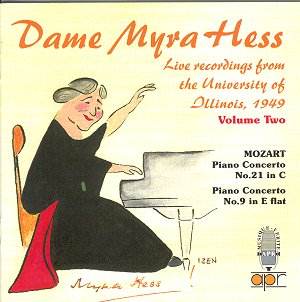 Composer: Christoph Willibald Gluck
Composer: Christoph Willibald Gluck
Works: Italian Arias: Antigono: “Berenice, che fai?”, La Clemenza di Tito: “Tremo fra’ dubbi miei”, “Ah, taci, barbaro”, “Come potresti, oh Dio!”, “Se mai senti spirarti sul volto”, La Corona: “Quel chiaro rio”, Ezio: “Misera, dove son!”, “Ah! Non sono io che parlo”, Il Parnaso confuso: “Di questa cetra in seno”, La Semiramide riconosciuta: “Ciascun siegua il suo stile”, “Maggior follia”
Performers: Cecilia Bartoli (mezzo-soprano), Akademie für Alte Musik Berlin, Bernhard Forck (leader)
Recording: Recorded in the Studios of the Deutsches Filmorchester Babelsberg, Berlin, 8 & 11-16.1.2001
Label: DECCA 467 248-2
Cecilia Bartoli’s venture into the Italian arias of Christoph Willibald Gluck is both a remarkable testament to the composer’s early works and a celebration of vocal artistry. Gluck, primarily recognized for his reform operas, such as “Orfeo ed Euridice” and “Alceste”, has often been overshadowed in the concert repertoire by the more flamboyant operatic styles that followed him. This disc, however, shines a light on Gluck’s pre-reform Italian compositions, featuring arias largely drawn from his collaborations with the librettist Pietro Metastasio, and presents a vibrant opportunity to reconsider his contributions to the operatic landscape.
Bartoli’s interpretative choices are striking, showcasing her ability to navigate the emotive landscapes of Gluck’s music with exceptional nuance. Her voice, rich and flexible, serves the character-driven nature of these arias, allowing her to explore a range of emotions—from the anguished despair of Ezio’s “Misera, dove son!” to the spirited defiance in “Ah, taci, barbaro”. In the latter, Bartoli employs a thrilling mix of crisp articulation and dynamic shading that brings forth the drama inherent in Gluck’s writing. The Akademie für Alte Musik Berlin, under the direction of Bernhard Forck, complements her artistry with an authentic sound world, employing period instruments that evoke the clarity and color of Gluck’s own time. The ensemble’s attentiveness to balance and texture ensures that Bartoli’s voice is both a focal point and a harmonious part of the ensemble sound, rather than a mere overlay.
The recording quality, produced with meticulous attention to detail, captures the warmth and richness of Bartoli’s voice while maintaining the distinct sonorities of the early instruments. The acoustic environment of the Babelsberg studios enhances the clarity of each note, allowing the listener to appreciate the intricate interplay between voice and instruments. Notably, the precision of the Akademie für Alte Musik is commendable; their ability to navigate the often delicate orchestral passages while providing a supportive backdrop to Bartoli’s performances reflects a deep understanding of the stylistic demands of the repertoire.
Bartoli’s technical prowess is particularly evident in her handling of the coloratura passages, where she transitions seamlessly between lyrical lines and virtuosic runs. Take, for instance, her execution of the trills in “Ciascun siegua il suo stile,” where her approach to ornamentation feels both spontaneous and grounded in historical practice. This not only showcases her command over the vocal line but also respects Gluck’s intent for expressive singing. While some purists may debate the authenticity of her vibrato or the occasional breathy quality in her middle register, these elements are employed with artistic intent, enhancing the emotional depth rather than detracting from it.
Comparatively, while there are other notable recordings of Gluck’s works, such as those featuring Renée Fleming and other prominent sopranos, Bartoli’s interpretation is distinct in its intensity and emotional engagement. Her ability to embody the characters is palpable, and the choice to highlight lesser-known arias adds a refreshing perspective to Gluck’s oeuvre, often overlooked in favor of his more famous works.
This recording is an immersive experience that not only honors Gluck’s legacy but also highlights Cecilia Bartoli as a formidable artist of our time. The thoughtful programming, combined with a commitment to authenticity and emotional sincerity, results in a disc that is bound to resonate with both aficionados of the repertoire and newcomers alike. As we listen, we are reminded that the depths of Gluck’s musical language remain as relevant today as they were in the 18th century, especially when interpreted with such fidelity and passion.



